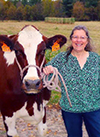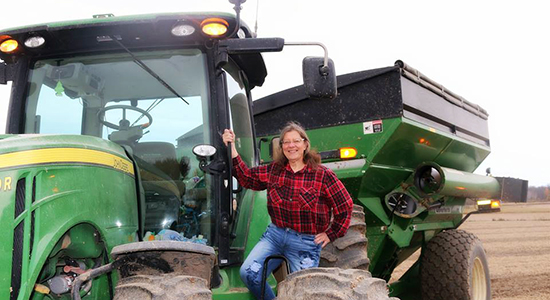Farmers and agribusiness are required to follow the revised implements of husbandry or face high fines for overweight or improperly marked equipment.
 Roberta A. Heckes, Marquette 1999, is a solo practitioner in Adell and Neillsville, primarily serving agriculture and the transportation industry. She also has an active appellate practice.
Roberta A. Heckes, Marquette 1999, is a solo practitioner in Adell and Neillsville, primarily serving agriculture and the transportation industry. She also has an active appellate practice.
Historically, Wisconsin agricultural equipment operators have operated farm equipment on the highways in a safe and responsible manner. From 2008-2012, accidents involving farm equipment resulted in 16 fatalities (0.62 percent); 314 injuries (0.21 percent); 511 property damage incidents (0.12 percent).
Recently, the legislature saw a need to revise the definition of implements of husbandry to meet the changes in agriculture equipment sizes, types of machinery, and scale of operation.
Under Wis. Stat. section 340.01(24)(A), implements of husbandry (IOH) are defined as all of the following:
- Self-propelled or towed vehicle that is manufactured, designed or reconstructed to be used and that is exclusively used in agricultural operations
- Combination of vehicles in which each combination vehicle is an implement of husbandry, standing alone, or is towed by a farm truck, farm truck tractor, moto truck or agricultural commercial motor vehicle.
Three Classes of Equipment
IOH are categorized into 3 classes of equipment:
Category A (farm tractor)
- A motor vehicle designed and used primarily as an implement of husbandry
- For drawing or having other implements of husbandry attached to it
Category B
- Self-propelled combines, forage harvesters, and fertilizer or pesticide application equipment (not manure equipment)
- Towed or attached tillage, planting, harvesting, and cultivation equipment, and its towing farm tractor or other power unit
- Other self-propelled vehicle that directly engages in harvesting farm products, directly applies fertilizer, spray or seeds (not manure), or distributes livestock feed
Category C
- Farm wagon, grain cart, farm trailer, manure trailer
- Any other trailer adapted to be towed by, or to tow or pull, another IOH

Roberta Heckes with an "implement of husbandry," a John Deere tractor with a gravity cart.
Road Operating Limitations
Height Limitations
- 13’6” standard height clearance
- No height limit when operator responsible for knowing equipment height and being aware of bridges, overhead wires, overhanging objects, etc.
Width: No width limit, but special lighting requirements (as of Nov. 1, 2015):
- All IOH need slow moving vehicle sign, mounted to rear and visible at all times, unless exception
- Reflectors must be readily visible during hours of darkness
- Legal clearance lamps must be seen and recognized during hours of darkness
Length Limitations
- For single-unit IOH: Maximum of 60 feet
- For two-unit IOH: Maximum of 100 feet
- For three-unit IOH: Maximum of 100 feet, limited to 25 mph or less; maximum of 70 maximum when speed is more than 25 mph
Weight Limitations
Class A Highways
- 92,000 lbs. gross weight, with axle spacing and total axles meeting “Bridge Law” requirements
- Seasonal weight limits and other special postings apply, Wis. Stat. section 348.17
Category B IOH Exceptions
- Class B road postings do not apply
- Exempt from axle weight limits unless local ordinance or resolution limits self-propelled IOH axle weight limits
- Exempt from gross and axle weight limits when operating on highway between fields distance of a half mile or less
This brief synopsis of IOH law is not a comprehensive analysis of the various nuances of IOH law, and does not include the provisions that control Agriculture Commercial Motor Vehicle (AgCMV).
If you have questions about any provision of IOH law and requirements, seek knowledgeable legal counsel.
